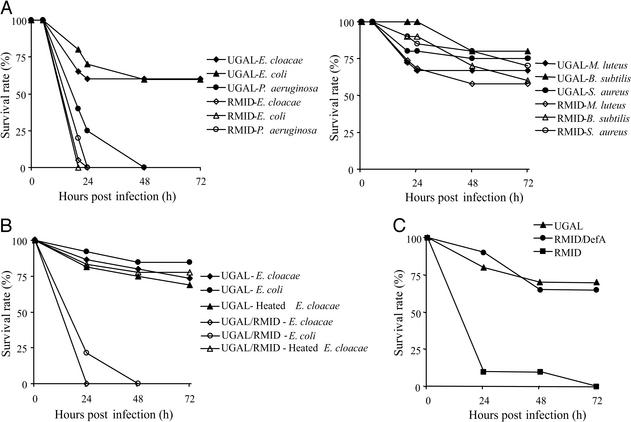Figure 4.
(A) High susceptibility of the Vg-ΔRel transgenic mosquitoes to infection by Gram-negative bacteria. The survival rates of the transgenic and parental mosquitoes infected with the indicated microorganisms are presented. Each experiment was performed using 18–20 mosquitoes for each case, and the results shown are representative of at least two independent experiments. (Left) Result challenged by three Gram-negative bacteria: E. cloacae, E. coli, and P. aeruginosa. (Right) Result challenged by three Gram-positive bacteria: S. aureus, B. subtilis, and M. luteus. (B) Genetically dominant phenotype of the transgene Vg-ΔRel. Female transgenic mosquitoes were mated to male wild-type UGAL mosquitoes, and their progeny were challenged. These heterozygous mosquitoes showed a marked susceptibility to alive bacteria, E. cloacae and E. coli. Heat inactivation of E. cloacae was performed by incubating the bacterial suspension at 95°C for 30 min. (C) Wild-type resistance recovery of immune-compromised mosquitoes overexpressing the defensin gene. Female Vg-ΔRel transgenic mosquitoes were mated to male Vg-DefA transgenic mosquitoes, and their progeny were applied to survival test with E. cloacae. These Vg-DefA transgenic mosquitoes were constructed using the same transformation vector pBac[3xP3-EGFP, afm] and Vg promoter as pBac[3xP3-EGFP, afm, Vg-ΔRel].

